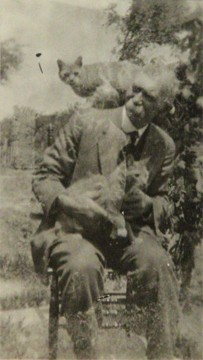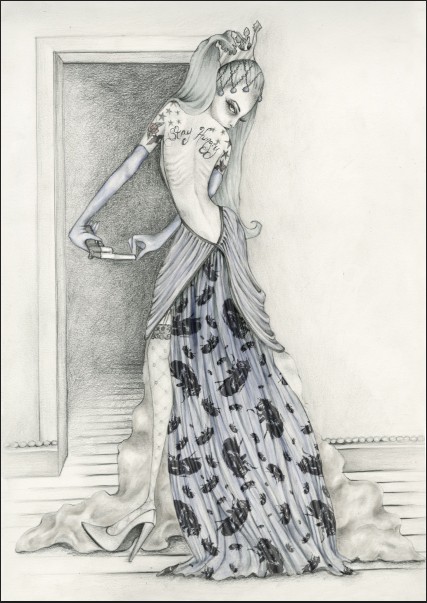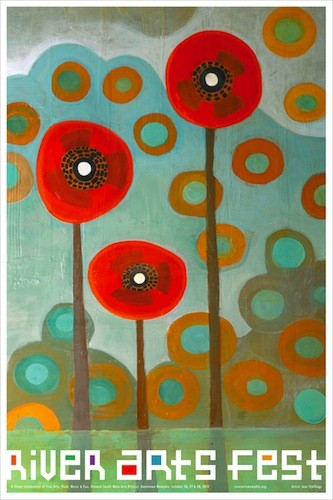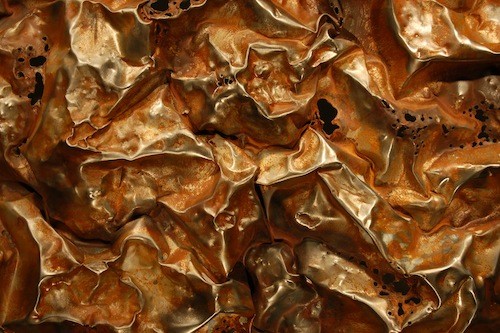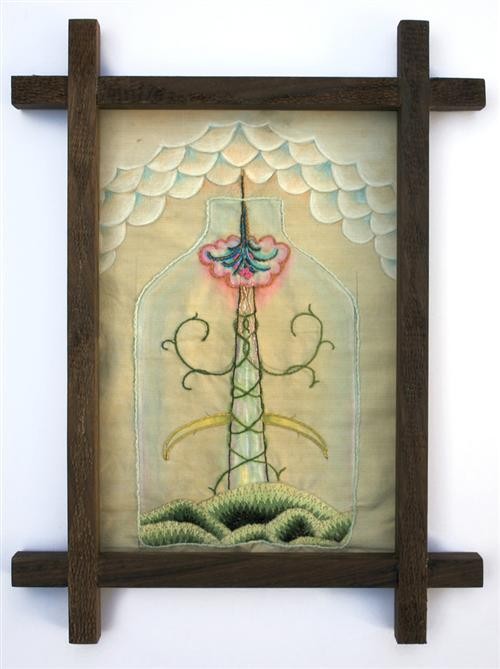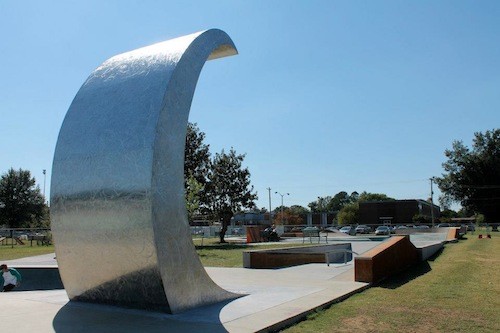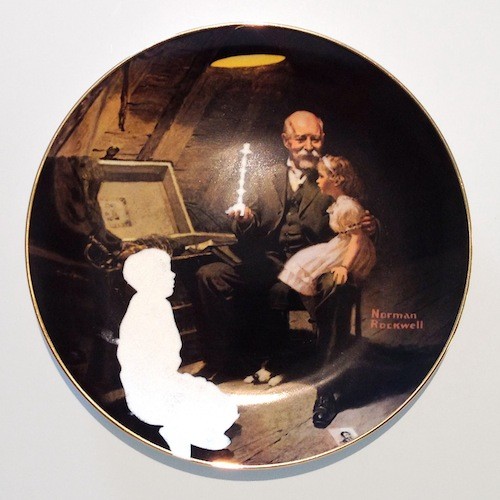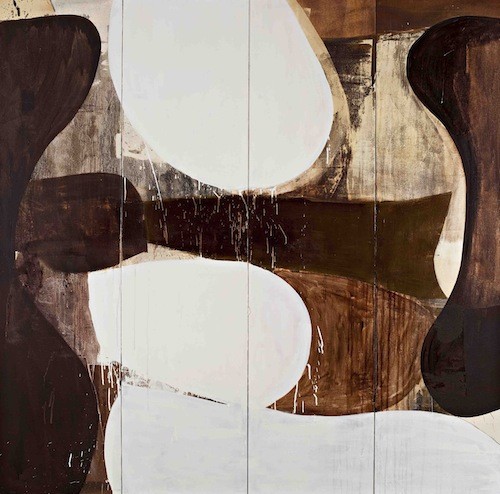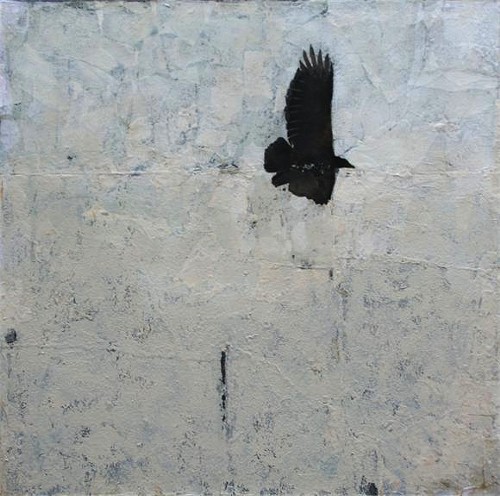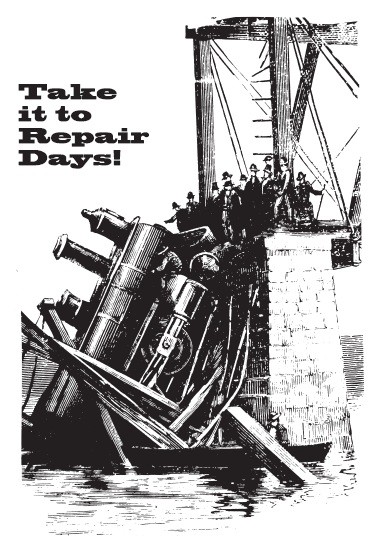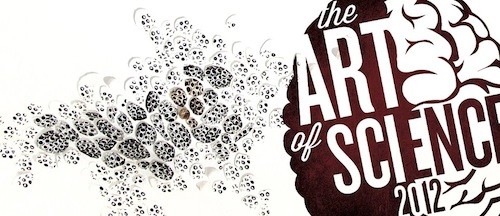Barack Obama or Mitt Romney? It is that simple. I cannot imagine why anyone would still be undecided. One candidate is going to cut taxes, balance the budget, and create jobs. The other candidate will cut taxes, balance the budget, and create jobs.
Regardless of your political leanings, this is essentially what you can expect from whoever is elected president next week. Not much. People will still be protesting something — jobs, wars, trade treaties, equal rights, whatever. The world will not end, America will not collapse, and things will pretty much continue as they have for decades. The things that affect the majority of people today in 2012 are exactly the same things that affected people in 1980, 1960, 1940, 1920, 1900, etc.
This all sounds way too pessimistic, doesn’t it? I think it does. And I have never really thought about it in this context until I visited the exhibitions “Hot Cold Cool” and “11 Septembers,” both currently on view at the Art Museum at the University of Memphis (AMUM).
“Hot Cold Cool” is four separate exhibitions from the museum’s expanding works-on-paper collection and includes work from some of the heaviest hitters of the 20th century: Frank Stella, Louise Nevelson, Robert Motherwell, Philip Guston, and Mark di Suvero.
AMUM director Leslie Luebbers was associated with the World Print Council from 1978 to 1984 and during that time amassed quite a personal collection of prints and works on paper. She is currently in the process of giving this work to the museum.
“‘Hot Cold Cool’ started as a means of making the time to do the basic collection data work,” Luebbers says. “All the prints in my collection were done during the Cold War, and the World Print Council’s purpose was in some sense a way of linking to artists whose work would otherwise be inaccessible. The political situation was always in the background, even if it was not overt.”
The “Hot” of the exhibition title equals the Vietnam War. “Cold” refers to the Cold War and includes Russian propaganda posters. The “Cool” is formalism — art about art and only about art, vis à vis Clement Greenberg or an Andy Warholian Pop coolness. According to Luebbers, “This coolness is related to the repressive anti-Communism of McCarthyism and the pall it exerted on the expressive content in art. The ’50s and ’60s were great times to be specifically nonpolitical. The Vietnam War opened Pandora’s box.”
The reductive work of Ad Reinhardt and the luminescent woodcuts of Carol Summers could never be confused with antiwar art, yet, as is evident with their work in this exhibition, each was compelled to create accusatory images and signs of disapproval in response to the Vietnam War. “That is the lesson of this portfolio: Artists protest,” Luebbers says.
That artists protest is also the contention of Memphis artist Jan Hankins and his exhibition “11 Septembers.”
Umpteenth Amendment was created during the George W. Bush administration and served as the impetus for the rest of the work in the exhibition. It is a ginormous 96″ x 240″ painting of an American bill where the front and back are simultaneously featured on the same side. Prominent members of Bush’s cabinet are humorously represented throughout the piece enjoying their spoils of war.
On the opposite wall are emblems of government agencies and what Hankins claims are their real and intended purpose. Big Coal Advisory Commission, Department of Health and Second Mortgages, and Department of Guns and Fool Recreation are just a few of the pieces.
Hankins’ interest in making political work began during the Reagan administration, particularly with the United States’ involvement in the civil wars of El Salvador and Guatemala.
“[They] perpetuate this myth of the U.S. being the saintly policeman of the world, which is something we never have been,” Hankins says.
This perpetuation continues today, and Hankins’ nuclear anxiety is the subject of his new work, specifically the drone attacks on Pakistan, a country with hundreds of nuclear weapons. “I am afraid the wrong person will get ahold of one of these weapons and attempt to teach us gringos a lesson,” Hankins says.
Hankins, a self-described socialist, says, “Socialism is the historical trajectory of society. We have to work things out. It is in everyone’s interest to work together.”
This is a nice statement. It really is. I also happen to believe it to be true. But, in this political climate and our history of not learning from our past mistakes and protests, who are we really kidding?
“Hot Cold Cool” and “11 Septembers” through November 21st
